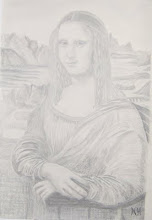Monday, 23 July 2012
The Periodic Spiral of Elements an artist theory on the physics of Time
A Spiral Periodic Table of elements
The Periodic Table of elements is the corner stone of modern chemistry, but in a way it is based on the paradoxes of quantum mechanics.
In a new theory the paradoxes of quantum mechanics can be explained giving us a deeper understanding of why we have a periodic table of elements.
This theory is based on just two simple postulates:
1. The first is that the quantum wave particle function Ψ or probability function represents the forward passage of time ∆E ∆t ≥ h/2π itself photon by photon
2. The second is that Heisenberg’s Uncertainty Principle ∆×∆p×≥h/4π that is formed by the probability function is the same uncertainty we have with any future event.
This process of continuous change or energy exchange we see and feel as the flow of time itself that we can interact with turning the possible into the actual!
This process is totally universal and interactive; from the largest object to the smallest creature right down to the smallest element of the periodic table will slow the rate that time flows forming a curvature of spacetime relative to its own energy or mass.
In this theory the elements of the Periodic Table are standing waves over a period of time. Time is continuously being formed by the spontaneous absorption and emission of light waves of EMR.
This forms a universal process of spherical symmetry forming and breaking that forms the spiral patterns we see in our everyday life with each element of the Periodic Table having a set position forming the curvature of these spirals.
With Hydrogen at the centre of a Spiral Periodic Table with the noble gases and the different groups of elements radiating out like spokes from the centre of a wheel.
In the traditional Periodic Table there is a problem of where to place Hydrogen and Helium they can be placed on the left hand side because of their electron configuration or they can be placed on the right hand side.
But by placing Hydrogen in the centre of a spiral we solve this problem.
Also by having a periodic spiral we place the groups of elements that can undergo Ionic bonding together on either side of the noble gases,
We have had many different types of Periodic Tables in the past.
In 1865 the English chemist John Newlands formed a periodic table where elements with similar physical and chemical properties recurred at intervals of eight, which he likened to the octaves of Western and Indian music.
This became known as the law of the octaves but it only worked up to the element calcium. Newly discovered elements further down the periodic table would not fit into the octave structure.
This theory can explain a reason for this it is because the spiral symmetry is formed out of the broken symmetry of a sphere and as we go down the Periodic Table the spiral symmetry becomes more broken and the elements become less stable.
Only in three dimensions can we see the true beauty and wave like nature of the periodic table. Each wave forms a period with elements that have similar properties having a similar position within each wave.
Link to the video: ‘The Periodic Spiral of Elements’
~
Subscribe to:
Post Comments (Atom)

















2 comments:
Hello,
Does the periodic spiral predict any new elements?
We stumbled over here coming from a different web page and thought I might check things out.
I like what I see so now i'm following you. Look forward to going over your web page yet again.
Look into my web blog :: best registry cleaners
Post a Comment